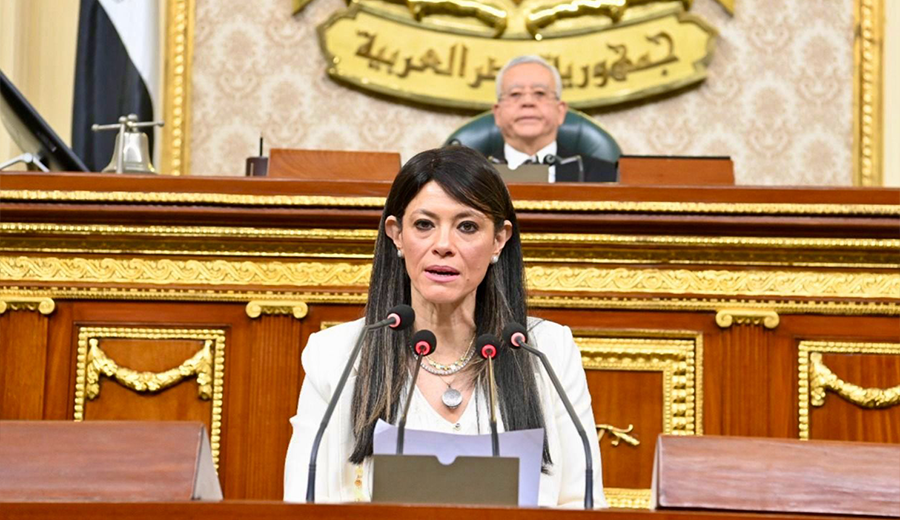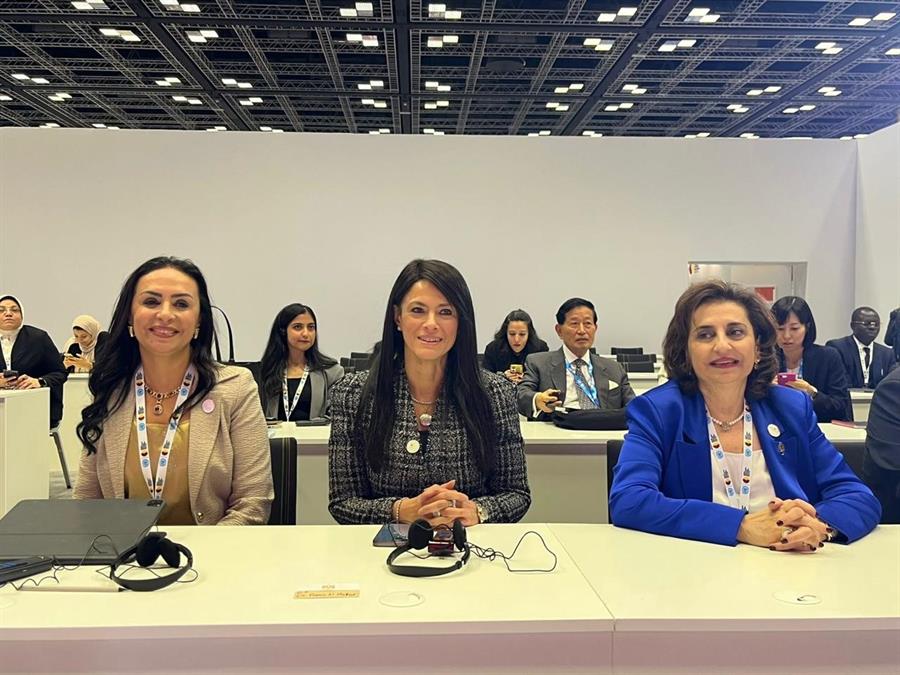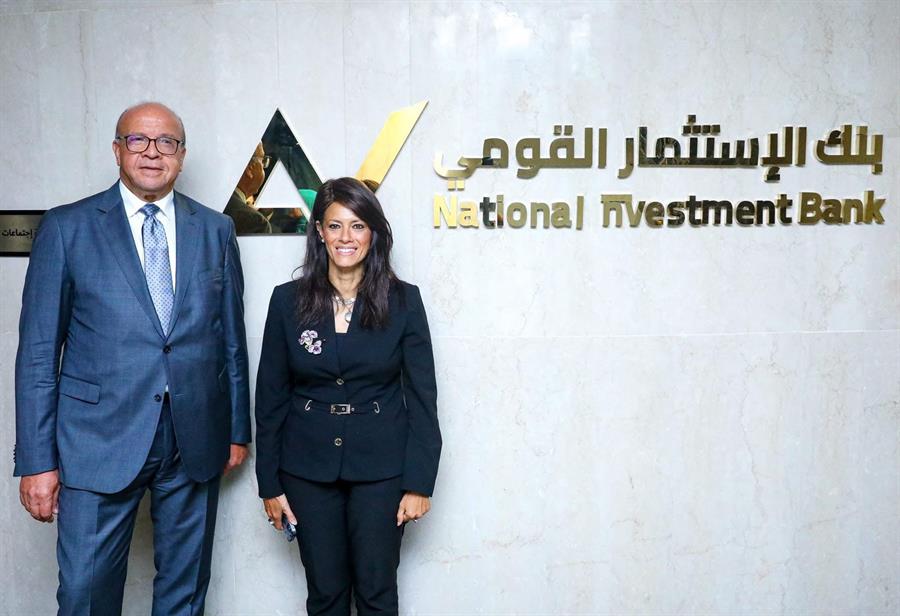Minister of Planning and Economic Development Continues Review of Key Pillars of the Fiscal Year 2025/2026 Plan Targets before the House of Representatives

15 April 2025
Dr. Rania Al-Mashat:
We aim to continue implementing the second phase of the structural economic reform program in the new fiscal year's plan.
700 billion EGP in investments in human development sectors during the upcoming fiscal year, a growth of 56% compared to the current fiscal year.
Expanding the scope of targeted social protection programs for the most vulnerable groups, with a focus on female heads of households and rural areas.
Making room for private sector contributions by the state continuing its policy of withdrawing from economic activity.
Continuing commitment to the governance of public investment and applying program and performance budgeting from both financial and planning perspectives.
H.E. Dr. Rania A. Al-Mashat, Minister of Planning, Economic
Development and International Cooperation, stated that the key pillars of the
upcoming fiscal year's plan targets include the state's continued
implementation of the structural economic reform program (Phase II) and the
state's commitment to its international obligations before international and
regional financing institutions. It also includes the continuation of the
state's policy of withdrawing from economic activity to make room for private
sector contributions, with ongoing coordination and integration between
monetary and fiscal policies to achieve the stability of financial and banking
transactions, provide means of financial sustainability, and ensure the
alignment of implemented policies regarding inflation containment, governance
of public investment (both current and investment), supporting small and micro
enterprises, and targeting the protection of low-income groups.
This came during Dr. Rania Al-Mashat's review of the key
pillars of the new fiscal year 2025/2026 plan targets before the House of
Representatives, headed by Counselor Dr. Hanafy Gebaly, and in the presence of
the esteemed members of the House.
Transition to Tradable and Export-Oriented Sectors
H.E. Dr. Al-Mashat mentioned that among these pillars is the
change in the followed growth pattern by transitioning to a sustainable growth
pattern based on tradable and export-oriented sectors and activities with high
added value, instead of non-tradable and non-export-oriented sectors and
activities. This aims to enhance the productive capacities of the Egyptian
economy and create more productive job opportunities, within the framework of
the national narrative for economic development, which targets promoting
economic development and reforms for growth, employment, and achieving a
resilient economy, through strategies to attract foreign direct investment, an
industrial development strategy, public finance adjustment, and the development
of planning tools.
Governance of Public Investments
H.E. Minister Al-Mashat highlighted that the 2025/2026 plan
includes serious work to address the international liquidity problem by
stimulating exports, developing remittances from Egyptians working abroad,
increasing the country's resources from tourism and the Suez Canal, and
encouraging foreign direct investments. This is in addition to maximizing the
utilization of concessional development financing, debt swaps, and extending
debt maturities, as well as adhering to the application of the prioritization
concept to the governance of public investments, which gives priority to driving
economic growth in the agriculture, manufacturing industries, communications
and information technology sectors, and other sectors in which Egypt enjoys a
comparative advantage such as tourism and logistics, alongside the priorities
of service sectors concerned with health services, school and university
education, and scientific research.
Human Resource Development
H.E. Dr. Al-Mashat pointed out that the state gives absolute
priority to human resource development to achieve the strategic goal of
"building the Egyptian person," which was evident in the pattern of
total investment resource allocations. Approximately 700 billion EGP was
allocated to human development sectors (education, health, and other social
services) in the 2025/2026 plan, compared to investments of 447 billion EGP in
the 2024/2025 plan, an overall increase exceeding 56%.
H.E. Minister Al-Mashat clarified that the targets of the
new fiscal year's plan also rely on continuing all necessary measures to
improve the investment climate and stimulate the private sector to conduct
business through packages of facilities and incentives that encourage activity
and reduce transaction costs. She noted the General Authority for Investment
and Free Zones' issuance of an investment strategy (2023-2026) that included a
package of incentives comprising 29 incentives aimed at revitalizing private
investment and increasing its effectiveness in driving economic growth.
Development Financing for the Private Sector
In addition to the Ministry continuing to negotiate and
coordinate with development partners to provide the necessary financing
resources for the private sector on concessional terms, concessional
development financing from multilateral and bilateral development partners
amounted to about $4.2 billion in 2024, compared to $2.9 billion in 2023,
exceeding the available government financing of $3.2 billion in 2024.
Facilities for purchasing strategic goods also recorded about $2.2 billion.
H.E. Dr. Al-Mashat emphasized that these financings reflect
the attractiveness of the Egyptian private sector and the success of the
structural reforms implemented by the state in increasing private sector
investments. On the other hand, financing for budget support and the supply of
strategic goods amounted to about $4 billion during 2024.
H.E. Minister Al-Mashat pointed to the continued efforts of
the Ministry to mobilize green and sustainable financing through the country
platform for the "NWFE" program, which is a regional model and
approach for concessional financing to address climate change issues
(mitigation and adaptation).
The efforts made over two years since the program's launch
in cooperation with development partners have succeeded in mobilizing
development financing for the private sector in renewable energy projects
(solar and wind energy) worth $3.9 billion, in order to add a renewable energy
capacity of 4.2 gigawatts.
Furthermore, the development financing obtained by the
private sector from multilateral and bilateral development partners during the
period from 2020 to 2024 exceeded $14.5 billion.
The Minister emphasized the state's keenness to achieve
integration between development planning and financial planning, with the aim
of determining the required financing flows, enabling the state to develop a
vision for priority development needs and find alternatives more effectively to
finance programs and projects in order to achieve the set goals, as well as
improving the efficiency of the state's resource utilization.
Egypt’s Integrated National Financing Strategy
H.E. Dr. Al-Mashat pointed out the government's launch, in
cooperation with the United Nations, of "Egypt’s Integrated National
Financing Strategy" during March 2025, which aims to promote sustainable
development in line with Egypt's Vision 2030. She explained that the strategy
aims to address the financing gap for seven key sectors – health, education,
social protection, water and sanitation, transportation, climate change, and
women's empowerment – which have been identified as national priorities by the
Egyptian government.
The strategy also sets out a practical roadmap for
sustainable and innovative financing through a set of measures to bridge the
financing gap, including expanding partnerships between the public and private
sectors, strengthening the green banking system, and intensifying financing
tools to support priority sectors. In addition to establishing a governance and
coordination mechanism to ensure the effective implementation of the strategy's
recommendations in coordination with the two existing ministerial working
groups on "Development Finance" and "Sustainable Finance."
Stimulating Innovation and Entrepreneurship
H.E. Dr. Al-Mashat continued that the key pillars of the
upcoming fiscal year's plan targets include the continuation of efforts to
stimulate innovation and entrepreneurship, within the framework of the
Ministerial Group for Entrepreneurship, which aims to enhance the capacity of
startups and the entrepreneurship ecosystem to achieve sustainable and
accelerated economic growth based on competitiveness and knowledge. The
government is also keen on reviewing and restructuring social support policies,
taking into account the provision of social protection for low-income groups
and expanding the scope of the sector to include all eligible individuals.
Expanding the Umbrella of Social Protection
H.E. Dr. Al-Mashat affirmed that the plan focuses on
expanding the umbrella of social protection by considering a number of tracks
in a balanced manner, including expanding the coverage of targeted social
protection programs for the most needy groups, with a focus on female heads of
households and Upper Egypt's rural areas, and supporting the sustainability of
social protection programs similar to the Takaful and Karama program, with the
expansion of conditional cash transfer programs and increasing allocations and
assistance for each beneficiary/family. It also includes expanding the coverage
of social insurance by encouraging workers to participate in social security
systems and providing protection against the challenges of old age,
unemployment, disability, etc., as well as working to maximize the utilization
of concessional development financing provided by Egypt's development partners
and the support of multilateral companies in this regard, and expanding the
adoption of geographical targeting programs for the most needy and remote
areas.
The Minister added that the plan's pillars also include
continuing commitment to the governance of public spending, applying program
and performance budgeting from both financial and planning perspectives,
applying cost-benefit criteria to maximize the benefits of implemented
projects, and targeting employment by providing approximately 900,000 job
opportunities through the annual plan, allowing for a reduction in unemployment
rates to about 6.5% of the total labor force.
This will be achieved by stimulating the expansion of
medium, small, and micro enterprises, and strengthening linkage and networking
relationships with large-scale projects, in addition to continuing to contain
inflation, especially with its recent downward trend, which contributes to
lower interest rates, thereby stimulating investment, as well as reducing the
costs of living and social support allocated in the state's general budget. She
explained that this comes through continuing to direct resources towards the
real productive economy and continuing government efforts to control markets
and expand outlets for distributing goods at reduced prices.









